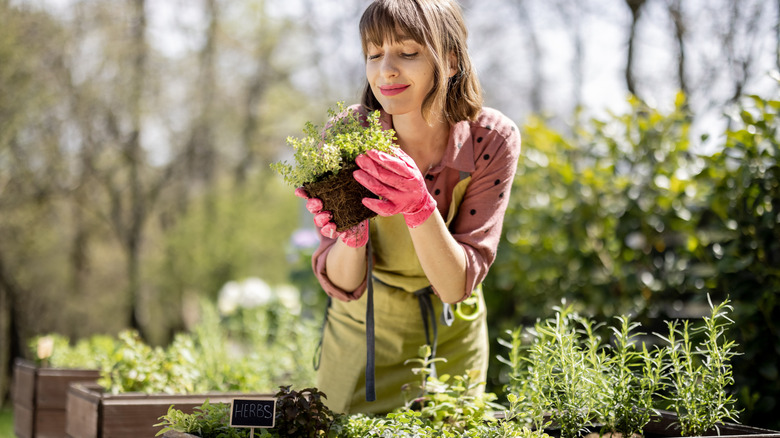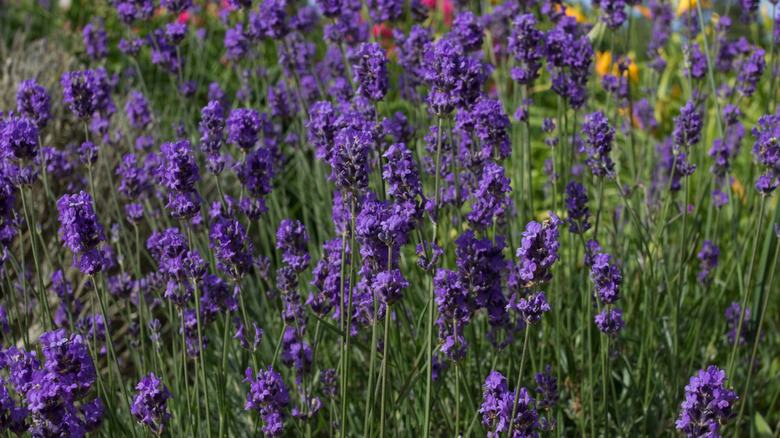The Herb Variety That Will Flourish In Your Dry, Humid Garden
Finding herb varieties that will thrive if you garden in a dry and humid climate can often be a little challenging. While many herbs that hail from Mediterranean regions will appreciate the drier conditions, a lot of them will find it difficult to tolerate high levels of humidity. The reverse is true for more tropical species that will relish humid surroundings but need ample moisture during the warmer months. As a general rule, English lavender prefers a dry atmosphere but most species will find it difficult to thrive when there's also a high amount of humidity. However, there is one lavender herb variety that will flourish in your dry, humid garden and that is 'Munstead' lavender.
'Munstead' is a cultivar of Lavandula angustifolia, commonly known as English lavender. It's touted as the most heat-tolerant variety in this species group, and will grow as a perennial in USDA hardiness zones 5 through 8. As a fairly hardy species, this cultivar is also regarded as having a higher tolerance to tough growing conditions including drought and humidity. It's quite a compact plant, only growing to a maximum height of 18 inches with a similar spread. It will delight you with masses of lovely scented flowers from spring right into summer, and these are ideal for cutting and drying. As a bonus, lavender is one of those fragrant flowering herbs that repel mosquitoes and perfume your garden, as well
Tips to ensure 'Munstead' lavender will thrive in your dry, humid garden
Giving 'Munstead' lavender optimum growing conditions will help it to flourish in your garden environment. To begin with, the best time to plant lavender for a sweet-smelling, vibrant garden is in late spring. It should be planted in a sunny spot in soil that is well-drained. Sandy or rocky soils are best to guarantee the survival of your plants. You definitely want to avoid rich, loamy soils if possible. If you suspect that excellent drainage might be a problem, it's good practice to grow this aromatic herb in raised mounds.
Another thing you can do to help combat the effects of higher humidity is to cover the ground around your plants with rocks or pebbles rather than using other types of mulch. You could also use things like crushed nut shells or pine needles, but avoid moisture-retentive mulches such as bark, straw, or compost. Essentially, gravel mulches will help to keep the crown of the plant dry and therefore assist in preventing root rot. In addition, you want to allow for plenty of air circulation, especially if you experience lots of moisture-filled air during the heat of summer. If you're mass planting, spacing your plants a bit further apart than recommended (12 to 15 inches) is usually a good idea. As a final tip, you might be interested to learn that a sprinkle of baking soda will have these popular garden flowers blooming like crazy.

